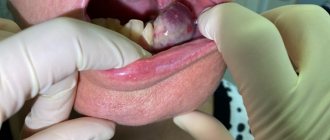Related news
Clinical recommendations for vaccination of pregnant women against influenza and pneumococcal infection
How to stop pneumococcus? Interview with N. I. Briko
How to prevent pneumococcal infections in adults?
Prevention of pneumococcal infection
Experts advocate for stronger protection against pneumococcus
Alexander Chuchalin: “Vaccine prevention is the optimal strategy to combat pneumonia”
Vaccination of adults against pneumococcal infection: world experience
Additional materials
Seminar: “Pneumococcal infection: status, problems and opportunities for prevention”
Where have all the ear infections gone?
Humanity against pneumococcus - a story of struggle and victories
General information
Worldwide, diseases caused by Streptococcus pneumoniae (S. Pneumoniae or pneumococci) and related to pneumotropic infections represent one of the most serious public health problems.
There are invasive and non-invasive forms of pneumococcal diseases. Invasive pneumococcal infection (IPI) includes a number of severe and life-threatening diseases: bacteremia without a visible focus of infection, meningitis, pneumonia, sepsis, pericarditis, arthritis. Non-invasive forms of pneumococcal infection are bronchitis, community-acquired pneumonia, otitis media, sinusitis, conjunctivitis.
According to statistics, up to 70% of all pneumonias, about 25% of otitis media, 5-15% of purulent meningitis, about 3% of endocarditis are caused by pneumococcus S. Pneumoniae.
Pneumococcal infection is usually a complication of other infections. Examples are pneumococcal pneumonia, inflammation of the middle ear (otitis) in children after or against the background of influenza, or measles, or any other respiratory viral infection.
Pneumococcal disease is spread through respiratory droplets such as coughing (especially through close contact). The source of infection can be a person without any clinical manifestations. Information about seasonality for diseases caused by S. Pneumoniae is quite contradictory. However, a number of authors note an increase in incidence in the autumn-winter period, which is characteristic of a number of other pneumotropic infections.
Children of the first years of life are the main carriers of pneumococci, infecting adults. While the usual carrier frequency in adults is 5–7%, among adults living with children it reaches 30%.
Types of meningitis
There are different classifications of the disease, one of which, depending on which meninges is affected by the inflammatory process, we have already considered. The following types of meningitis are also distinguished:
The inflammation can be serous (most often associated with viral infections) or purulent (bacterial infections).
Depending on the cause of the disease:
- Bacterial. Most often they are caused by meningococcal bacteria. But other bacteria can also be the cause, for example, syphilitic meningitis.
- Viral. Meningitis can be caused by rubella virus, mumps virus, chickenpox virus, etc.
- Fungal. In people with reduced immunity, fungi of the genus Candida cause infection (in this case it is one of the forms of candidiasis).
- Protozoans. Some parasites, such as Toxoplasma, may be the cause.
- Mixed. For example, if a bacterial infection joins a viral infection.
The disease can develop at different rates. Depending on this criterion, fulminant, acute, subacute, and chronic courses are distinguished. The pathology can occur in mild, moderate and severe forms.
Chance of getting sick
The highest incidence of severe pneumococcal infections is recorded in children under 5 years of age and among older people (over 65 years of age). Young children under 2 years of age, whose bodies are unable to resist infection, are especially defenseless against pneumococcus. For this age group, this is the No. 1 infection and the most common cause of severe forms of pneumonia, otitis media, and meningitis. Among the elderly, the most vulnerable are those who are permanently residing in aged care facilities.
In addition, risk groups for the incidence of pneumococcal infection include children and adults with chronic diseases of the cardiovascular, respiratory systems, diabetes mellitus, liver cirrhosis, chronic renal failure, Hodgkin's disease; children and adults with oncohematological diseases; HIV-infected; children and adults with cerebrospinal fluid leakage; children and adults after cochlear implantation; children and adults with sickle cell disease; with anatomical asplenia, or planning or having already undergone removal of the spleen. This should also include the so-called “organized” contingents (children attending kindergartens, students living in dormitories, military personnel, residents of nursing homes, prisoners and other adults and children living in overcrowded conditions). The presence of bad habits (alcohol, smoking) is also a risk factor.
Symptoms
Symptoms of pneumococcal infection, which causes pneumonia, include fever, cough, shortness of breath and chest pain. Symptoms of pneumococcal purulent meningitis are a stiff neck, severe headache, fever, confusion and disorientation, and photophobia. The initial manifestations of pneumococcal bacteremia (blood poisoning, the most severe form with a mortality rate of up to 50%) may be similar to some symptoms of pneumonia and meningitis, and may also include joint pain and chills.
In this regard, doctors again and again warn about the dangers of self-medication! You should not try to cope with the disease on your own, using commercials for various drugs and their availability in pharmacy chains as a methodological guide.
Complications after an illness
Pneumococcal meningitis is particularly severe, the incidence of which is about 8 per 100 thousand children under 5 years of age. On average, about 83% of cases occur in children under 2 years of age. Despite the fact that the pneumococcus Streptococcus pneumoniae ranks third after Haemophilus influenzae type b (hemophilus influenzae type b) and Neisseria meningitidis (meningococcal infection) as an infectious agent responsible for the development of this disease, the prognosis for pneumococcal meningitis is much more serious. Complications in the form of mental retardation, impaired motor activity, epilepsy and deafness occur significantly more often than in the outcome of bacterial meningitis of other etiologies.
Pneumonia caused by pneumococcus S. pneumoniae is most often complicated by pulmonary empyema (accumulation of pus in the pleural cavity, causing a decrease in the respiratory surface of the lung tissue), which leads to death (up to 2/3 of cases for empyema). In Russia, out of 500 thousand cases of pneumonia per year, 76% have pneumococcal etiology in adults and up to 90% in children under 5 years of age. The frequency of pneumococcal pneumonia among children under 15 years of age is 490 cases per 100 thousand, in children under 4 years of age - 1060 cases per 100 thousand.
Pneumococcal bacteremia in most cases (up to 80%) occurs with symptoms of fever without a focus of infection. The incidence of bacteremia caused specifically by S. pneumoniae is 8-22% in young children. It is pneumococcal sepsis with the development of severe shock damage to organs that is the most severe and life-threatening form of pneumococcal infection. The frequency of this nosological form in children under 5 years of age averages 9,000 cases per year; the mortality rate reaches 20-50%.
According to world statistics, the proportion of pneumococcal otitis media ranges from 28 to 55% of all registered cases. Pneumococcal acute otitis media is characterized by a more severe course and a high risk of otogenic complications, including a tendency to perforation of the tympanic membrane. Pneumococcal otitis media is the most common cause of hearing loss in children.
Risk of developing pneumococcal infections:
- In healthy people, the risk is 8.8 per 100,000.
- In patients with diabetes mellitus – 51.4.
- In adults with chronic lung diseases – 62.9.
- In patients with chronic heart disease – 93.7.
- for those suffering from cancer – 300.4.
- For HIV-infected people – 422.9.
- In patients with oncohematological diseases - 503.1 per 100,000.
The first signs of meningitis are a characteristic triad:
- Headache.
- Rigidity (increased tone) of the neck muscles. If you lay the patient on his back and ask him to relax his neck, and in the meantime passively bend his head forward, then the chin will not be able to be brought very close to the chest.
- Increased body temperature.
If these signs are absent, then the likelihood of acute meningitis is low. If all three occur, they are very pronounced and increase over a short time, you should immediately call a doctor.
Other possible symptoms: intolerance to loud sounds and bright lights, nausea and vomiting, increased irritability, drowsiness, confusion, coma. With viral infections, manifestations of the disease are usually preceded by muscle pain, increased fatigue, weakness, and loss of appetite.
The first signs of meningitis are a reason to immediately consult a neurologist for advice. If treatment is not started immediately, the consequences can be very serious.
Treatment
A global problem in the world is the increasing resistance of pneumococci to antibiotics - this means that treatment of pneumococcal infections with antibiotics is often ineffective. The main factor in the development of antibiotic resistance in pneumococcus is the irrational use of antibacterial drugs. When conducting monitoring in 2004-2005. 11% of pneumococcal strains were resistant to penicillins, 7% to macrolides, 40.8% to co-trimoxazole. But already in 2011-2012. a similar study showed that already 29% of S. pneumoniae strains have reduced sensitivity or are resistant to penicillin, 26% of strains are resistant to macrolides, 50% of strains are resistant to co-trimoxazole. According to the latest data, up to 10% of strains of pneumococcal infection have acquired resistance to combinations of broad-spectrum penicillin with β-lactamase inhibitors, which is extremely unfavorable prognostically, since due to the rapid development of the disease (2-3 days) there is no time to determine sensitivity to antibiotics , as a rule, no, and patients with severe pneumococcal infection often die, despite the introduction of standard antibacterial drugs.
Non-infectious causes of meningitis
Symptoms of meningitis can be caused by causes unrelated to infections:
- allergic reactions to certain medications (antibiotics, immunoglobulins, non-steroidal anti-inflammatory drugs);
- systemic inflammatory diseases, for example, sarcoidosis (in this case the disease will be called neurosarcoidosis);
- systemic lupus erythematosus and other connective tissue diseases.
- some cancers (if cancer cells spread to the meninges).
Depending on the causes, not only the symptoms of the disease vary, but also the severity, prognosis, and treatment methods for meningitis. For example, viral meningitis goes away on its own; in most cases, special antiviral drugs are not even needed, but bacterial meningitis can lead to serious brain damage, even death.
It is important to understand the cause and immediately begin the correct treatment, only this can prevent negative consequences. If the first symptoms occur, consult a doctor at the neurology center in Moscow, International Clinic Medica24. Contact the administrator of our clinic by phone: +7 (495) 230-00-01.
Get a consultation with a doctor
Message sent!
expect a call, we will contact you shortly
The primary diagnosis of meningitis is made by a neurologist during an examination of the patient. In this he is helped by the information obtained during questioning and a neurological examination. With inflammation of the meninges, characteristic symptoms are revealed:
- When the doctor presses on certain points on the head and neck where the nerves exit, it causes noticeable pain.
- Lightly tapping the cheekbone with a finger or a neurological hammer intensifies the headache.
- If the patient lies with his leg bent at the hip joint, he cannot straighten it at the knee joint, due to the fact that the muscles on the back of the thigh are very tense.
- When the patient lies down and the doctor tries to bend his head and bring his chin to his chest, his legs bend at the knee and hip joint.
- When the patient lies down and the doctor bends one of his legs at the knee and hip joint, the second leg bends in the same way.
There are other special tests. They help only with a high degree of probability to diagnose meningitis, but do not allow one to determine its cause or the severity of the inflammatory process. This requires additional research.
Effectiveness of vaccination
According to WHO, world experience has shown that mass vaccination reduces the incidence of pneumococcal meningitis and severe pneumonia in children by more than 80%, and the incidence of all pneumonia and otitis media by more than a third. The carriage of pneumococci in children is decreasing, and accordingly, unvaccinated children and adults get sick less. The World Health Organization projects that global use of pneumococcal vaccination will prevent 5.4 to 7.7 million child deaths by 2030.
Vaccination is the only highly effective way to significantly influence the morbidity and mortality of pneumococcal infections and reduce the level of antibiotic resistance in S. pneumoniae. With evidence of the safety and effectiveness of pneumococcal conjugate vaccines, WHO and UNICEF believe it is necessary to include these vaccines for children in all national immunization programs. At the same time, it should be noted that the maximum protective effect is achieved with routine vaccination of all children under 2 years of age, and not just patients in risk groups.
What are the dangerous signs of meningitis in adults?
- Sepsis is a systemic inflammatory response in the body, which manifests itself in the form of decreased blood pressure, high or abnormally low temperature, rapid heart rate and breathing, and excessive activation of blood clotting. The work of all organs is disrupted.
- Hemorrhage into the adrenal glands. Often leads to death.
- Brain swelling. In this case, convulsions occur.
- Brainstem herniation. If the swelling is too severe, the brain is pressed into the opening that leads from the skull into the spinal canal. The patient gradually loses consciousness, his pupils stop responding to light, and breathing may stop.
- Impaired outflow of cerebrospinal fluid. As a result, meningitis can lead to hydrocephalus.
- Damage to the brain and cranial nerves. Leads to neurological disorders.
Meningitis is a relatively rare disease, and its symptoms can occur in many other pathologies. If the symptoms are very strong and increase quickly, this should prompt you to immediately consult a doctor. But even if you have even a slight suspicion of this disease, it is better to play it safe and call a doctor.
You can get qualified medical care in our neurological center by calling
We will call you back
Message sent!
expect a call, we will contact you shortly
There are quite a few reasons that can lead to inflammation of the meninges. Some of them are associated with infectious processes, others are caused by non-infectious pathologies.
Vaccines
Vaccination has been used to combat pneumococcal infection for more than 30 years. Since 1981, the pneumococcal polysaccharide vaccine has been used. Since 2000, pneumococcal conjugate vaccines have been used in international practice for immunoprophylaxis of pneumococcal infection in young children.
To date, the following vaccines have been registered in Russia: two pneumococcal conjugate vaccines (10-valent and 13-valent - PCV10 and PCV 13) and one - polysaccharide 23-valent (PPV23). The latter is used in children over 2 years of age and adults. While conjugate vaccines are recommended for immunization of children from 2 months of age and adults aged 50 years and older. PCV13 is also registered in the US and EU for use in broader age groups (children 6 weeks to 17 years and adults 18 years and older). In the near future, the age indications for PCV13 are also expected to expand in Russia.
In 2013, the pneumococcal 13-valent conjugate vaccine Prevenar13 was awarded the Galen Prize as the best biotechnological product of the year.
More about vaccines
Latest epidemics
Most diseases are sporadic. Outbreaks of pneumococcal infection are uncommon, but can occur in closed communities, for example, in nursing homes, children's day hospitals and other similar institutions. However, large outbreaks of meningitis caused by serotype 1 have been reported in the African meningitis belt.
WHO estimates that of the 8.8 million children under 5 years of age who died in 2008, 476 000 (333 000 – 529 000) deaths were due to pneumococcal disease. Morbidity and mortality rates are higher in developing than in economically developed countries.











